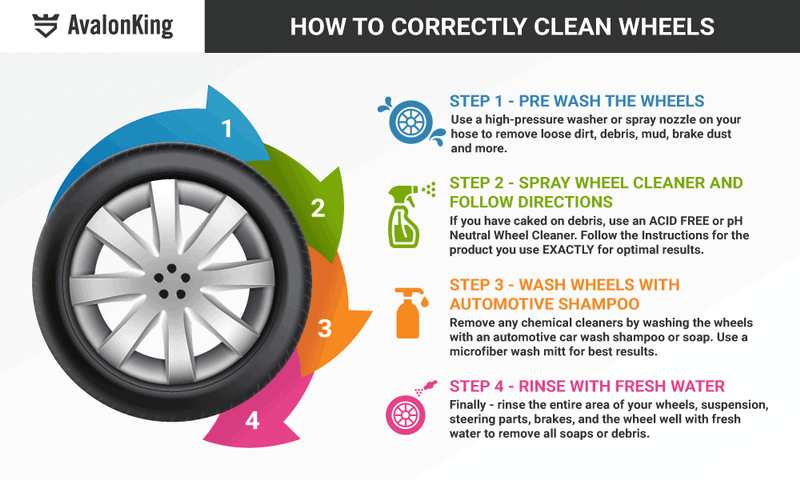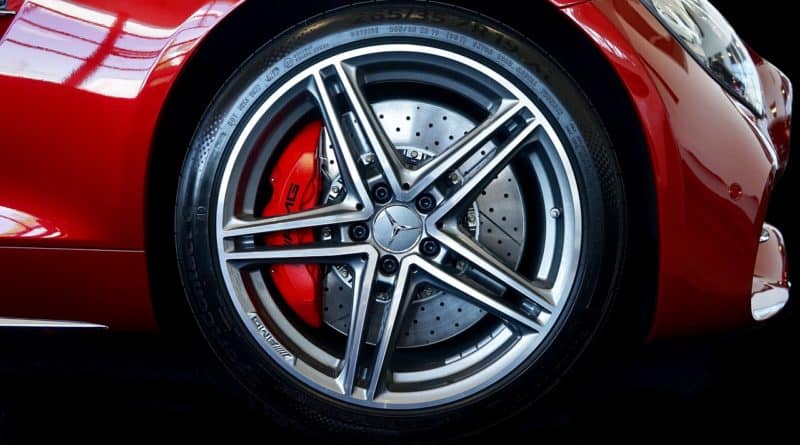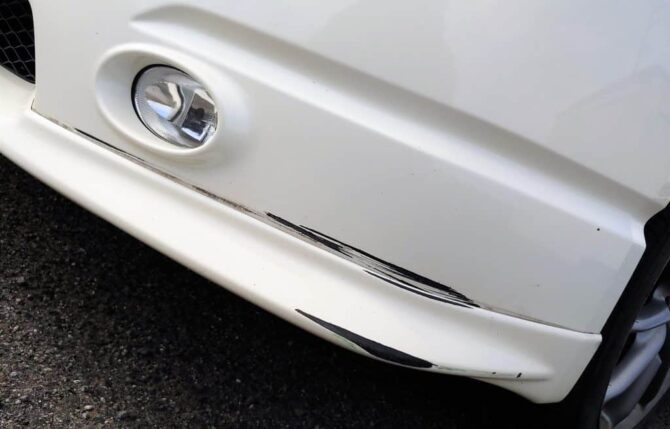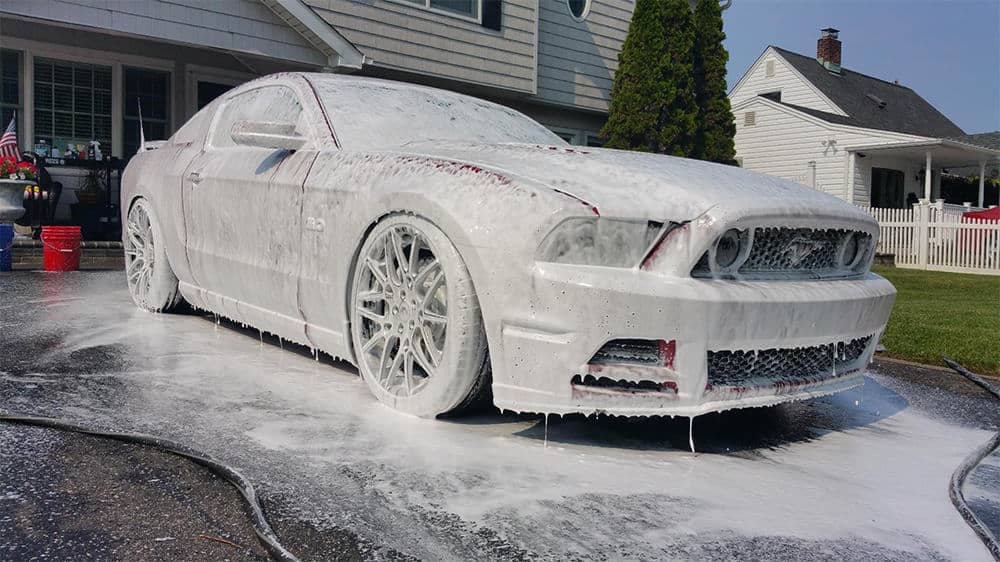Image credit: www.ratedradardetector.org
Its estimated that the average bi-weekly car washing session takes about an hour to complete. While some car owners invest more time, others look for quicker, faster, and more effective ways of detailing their rides. A hot topic these days is how to clean car wheels and rims efficiently – without screwing them up.
While quicker, faster, more efficient is typically a good thing, some methods and products used with wheel cleaning can damage brake system components if used incorrectly or too often. And that’s never a good thing, especially on a performance car.
This introduces the topic today – how to PROPERLY clean car wheels and rims. In the information below, we’ll outline a few of the recommended ways to clean the wheels on your ride. We’ll also explain some of the pros and cons of using some iron and fall out removers for cleaning your wheels.
Two Ways to Clean Car Wheels
Do you remember your old man saying, “there are two ways of doing something – my way or the highway.” Well my dad was a bit more articulate than that. He’d say, “if you’re going to do something – do it right, by using the right tool for the right job.”
I find that his wisdom is quite applicable for washing tires and wheels.

There are indeed two different ways of washing your rims – a quick and easy method (usually using a standalone chemical spray product – letting it sit – then spraying off) or the best way (involving the use of automotive soaps or wheel cleaner sprays, special brushes, and some elbow grease).
Explaining the Different Type of Spray Wheel Cleaners
Not all wheel cleaning agents are identically formulated. In fact, many of them are night and day. Let’s explain some of the common types of wheel cleaning agents used by detailers and DIY car enthusiasts.
Acid-Based Wheel Cleaners
It’s well understood that wheel cleaners with formulations to the left of the pH scale are highly effective at breaking down grime and other stuff coated on wheels.
They are not exceptionally acidic, most of them falling around 5.5 to 6 on the pH scale (with 7 being pH neutral). However, even a pH of 5.5 can be harmful or cause damage to certain types of wheels – like alloy’s or those that are chrome plated.
Dedicated pH Neutral Wheel Cleaners
The largest percentage of wheel cleaning agents used by consumers today are dedicated wheel cleaners. These typically contain pH neutral Wheel Cleaning agents. They work by breaking down brake dust, road grime through agitation after being sprayed on the surface. Most of them include foaming agents and surfactants designed to lift and remove debris.
Iron and Fallout Removers
The final classification of spray on wheel cleaners is what’s referred to as an iron or fallout removal spray. This is usually a pH neutral formulation that is safe to use on paint clear coating, wheels, and other metallic components. It’s not safe to use on plastic or vinyl components, due to the aggressive nature of some of its ingredients.
Although the spray is pH neutral, once it is activated with ferrous-based substances (like brake dust), it begins to change to an aggressive base (or the right side of the pH scale). As such, it’s a product that shouldn’t be used in direct sunlight, on warm surfaces, and especially not on any trim components.
How Does Iron and Fallout Removers Work?
Most of these sprays will change colors when it begins to break down iron or ferrous substances. So, what is this magic ingredient? Well – it’s the same stuff that makes these products smell like the back end of a skunk.
It’s called Ammonium Mercaptoacetate or Ammonium Thioglycolate. It’s typically colorless or has a light pink hue – but literally smells repulsive. It’s also known as perm salt. Here is why. It’s also used as the primary chemical that your grandma used at the hair salon to get her hair permed.
So, how does this stuff work? It’s rather simple – when you realize that it’s not just your granny’s perm acid that does the job. It’s the combination of four ingredients – Citric Acid – Ammonia – Thioglycolic Acid – Iron.

When these ingredients combine, it creates a chemical reaction, which creates ferric thioglycolate (this is the purple or red color you see that “shows it’s working”). Basically, it’s accelerating the process of rusting or oxidation. It transforms Wustite (which is the root mineral found in iron ore) into Ferric Oxide (yup – RUST).
This introduces a rather interesting conundrum. What happens when this stuff is sprayed onto your wheels – or specifically, those iron-based brake components behind the wheels?
Well – it literally starts to break down the ferrous ingredients on the rotors, pads, and other components – just like it breaks down brake dust and other ferrous substances on the wheels.
While this process is reduced when you spray it off with fresh water – it’s not 100% complete. To completely remove this type of spray from any substance is to use an automotive soap or shampoo after using the iron remover.
That said, IF you are going to use an iron or fallout removal spray on wheels – make sure to follow that up quickly with using a car shampoo or degreaser, to stop the chemical reaction which could damage brake components.
The Right Way to Clean Wheels
So, what’s the right way to clean wheels and tires? Well, like most maintenance projects, using the right products, tools, and methods typically leads to optimal results and reduced potential for damage.
Prepare Your Supplies
The first step in cleaning wheels is to collect the right supplies. While each wheel design or material is unique, there are some general cleaning supplies you can use for all types.

A dedicated wash bucket and supplies for wheel cleaning: The primary substance that coats wheels of all types is brake dust. As we all know, brakes are made of metallic or ferrous substances.
When you use the same wash bucket, microfiber wash mitt, or detailing brushes to wash wheels and your other parts of the vehicle, you significantly increase the potential of scratching sensitive areas – like paint, chrome, and more.
The supplies you want to collect for wheels include:
- Wash bucket
- Microfiber wash mitt
- Scratch-Proof soft bristle wheel brush
- Dedicated wheel cleaner spray (non-acidic)
- Degreasing or Wax-Stripping Automotive Shampoo (if you have non-ceramic coated wheels)
- pH Neutral, Wax-Free Automotive Shampoo (if you HAVE Ceramic Coated Wheels)
Once you collect your supplies, here are four easy steps for cleaning all types of wheels – from custom alloy to powder coated.
Step 1 – Spray Wheels with Water
In a perfect world, using a high-pressure washer is the optimal method for washing wheels. This is due to the excessive water pressure, that can help to loosen baked on contaminants.

If you don’t have a high-pressure washer, use a spray nozzle attached to your hose to apply copious amounts of pressurized water to remove as much loose stuff as possible.
Step 2 – Spray Wheel Cleaner on Each Wheel
It’s crucial to follow the EXACT instructions for using any wheel spray cleaning agent. Some formulations are simple spray, let sit, rinse off – and others require agitation with a wheel cleaning brush (which is why we added that in the supplies).

Either way, if you use a spray-on wheel cleaning chemical, make sure to follow their instructions – from start to finish. This includes spraying off the chemical.
Step 3 – Wash Wheels with Automotive Soap or Shampoo
Wheel cleaning chemicals might be “safe” for use, but you don’t want them to stay on the wheel surface – especially if you’ve got chrome or alloy wheels. As such, we’d recommend using an automotive specific car washing soap or shampoo.

For those with ceramic coated wheels, use a pH neutral, wax-free shampoo that is formulated to clean ceramic coated surfaces – without leaving a wax film. Many car shampoos that contain wax will significantly reduce the hydrophobic effect of the coating.
If you don’t have a ceramic coating, use a wax-stripping or decontamination car wash shampoo. This will help to remove the chemical residue left on the wheels, leaving them as clean as possible.
Step 4 – Rinse Completely and Wash the Vehicle Completely
When you’ve completed the steps above, rinse the wheels, on the outside, inside and the wheel well. It’s quite possible that during this process, soap or debris has been splattered onto suspension or brake parts, even the paint on the body.
When your wheels are clean, use separate supplies to wash the rest of your ride.
Wrapping it Up
Washing your wheels every time you clean your car is the best way to reduce brake dust build-up. If you’re going to use Iron Removal or aggressive chemical cleaner, make sure to wash that stuff off with a high-quality car washing shampoo. This will keep your wheels clean and reduce the potential of chemical damage.
Of course, applying a DIY nano ceramic coating on your wheels makes clean-up simple. You’ll reduce the potential of brake dust sticking to the rims, which reduces the need for harmful chemical cleaners in the first place.













1 comment
John Bontly
Thanks
Not sure if I have ceramic coated wheels
Thanks
Not sure if I have ceramic coated wheels